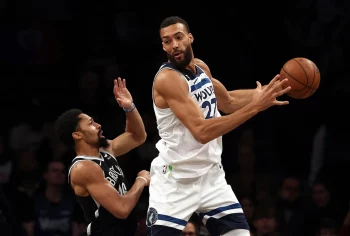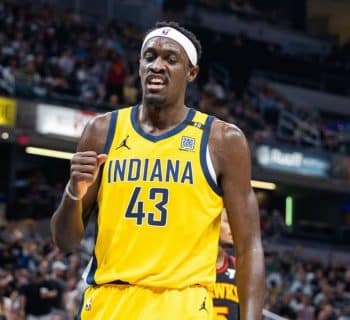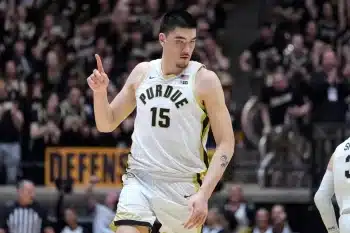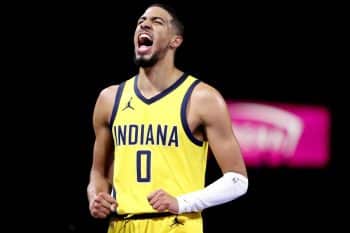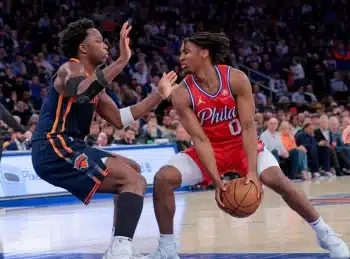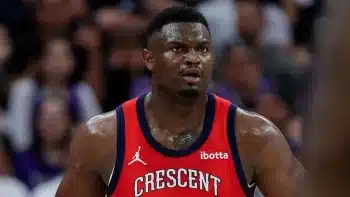NBA
The Warriors: Jump-Shooting Champions

Perhaps most consistently sizzling among the bevy of hot takes force-fed to the basketball populous by various talking heads over the last half decade is the case of the “jump-shooting team.” Modern influences like spacing and pace have become ingrained in the league with a speed that’s caught many from previous generations by surprise, provoking what’s often a tense and territorial debate about the merits and drawbacks of the new emphases. Many of the game’s former greats will still tell anyone who listens (in some cases, a whole lot of people) that a “jump-shooting team” can’t succeed in the NBA, often in the most adversarial way possible.
For a moment, let’s put aside the obvious hilarity of certain parts of this line of thinking. Let’s ignore the total inability of any of these critics to even explicitly define what they mean by “jump-shooting team,” or the fact that any middle school debate student worth their salt could make a convincing case that every single team in NBA history has been a jump-shooting team (or none of them have). Let’s assume these folks have a clear divider for their argument, and further let’s assume this battle wasn’t over several years ago when LeBron James’ Miami HEAT spaced Kevin Durant’s Oklahoma City Thunder to death and won a title playing Shane Battier as a power forward (it was).
Even making these most generous of assumptions, it couldn’t be clearer that the Golden State Warriors have dispelled this notion over the last two seasons. No offense in league history has been more synonymous with distance shooting, no team’s identity forged more clearly by the chaos their unrivaled marksmanship induces for opponents.
And yet, the takes persist. One plausible explanation, especially among such a narrative-driven crowd, is the lack of a signature moment: A relatively stress-free 2015 title run (with a couple exceptions) offered few opportunities for the Warriors’ primary skill to prove visibly dominant to the casual observer, particularly in high-leverage situations.
The tides began to shift this season, notably when a ludicrous Steph Curry 37-footer ended one of the best regular season games of all-time in Oklahoma City back in February. Klay Thompson’s otherworldly barrage to save Golden State’s season on that same floor in Game 6 of the Western Conference Finals was another notch on the collective belt. On the whole, though, it’s easiest to qualify just how vital the Warriors’ three-point shooting is by viewing this latest playoff run through a wider lens.
Consider a few of the following figures:
The Warriors are 6-3 this postseason while allowing opponents to collect 30 percent or more of their own misses. That’s good for a 66.6 percent win rate, which is still remarkable even if it doesn’t stack up to their regular season mark under such conditions (16-2, 88.9 percent win rate). During the regular season, the NBA as a whole (excepting Golden State) went 205-288 when allowing this high of an offensive rebounding percentage to their opponent, or roughly a 41.6 percent win rate – the Warriors have blown that away while playing much tougher average competition. A big reason why? They’ve connected on over 42 percent of their three-pointers in these six wins, while allowing opponents to shoot barely over 28 percent from deep on significantly fewer attempts.
The Warriors are 4-4 this postseason when their opponent takes at least 10 more free-throws than they do. Again, this is actually a huge step down from their gaudy regular season, where they went 17-3 in such games. But it’s still a huge departure from the rest of the league, which went 116-243 for the season under these adverse circumstances – just a 32.3 percent win rate. Chief culprit: The Warriors hit decimals shy of 45 percent from beyond the arc on a ludicrous 33 attempts per game in these four wins and allowed just 31 percent to their opponents (again, on far fewer attempts).
The Warriors are 6-4 this postseason when they turn the ball over on at least 12 percent of their own possessions. It should be no surprise that they were a silly 44-5 in the regular season in these games – honestly, anything worse would be the shock given their overall record. They’re massacring the league as a whole here again, though. The rest of the NBA went 598-731, good for a 44.9 percent win rate. The unifying factor remains: Golden State shot over 45 percent from deep (again on well over 30 attempts a game) and allowed under 30 percent in these six wins.
Great teams buck trends regularly, of course, but these go well beyond expectation even for the typical league champion. More than that, though, they lend credence to a line of thought that might make old-time purists sick to their stomachs: Not only does Golden State’s jump-shooting positively impact their on-court product, it’s the absolute root of their offensive success and is such a strength that it erases numerous disadvantages in what we typically think of as vital areas of the game.
They’ve used their magic whiteout wand regularly as they near a second consecutive title. It’s helped cover for a notable drop in efficiency inside the arc, particularly at the rim. Their 62 percent figure within five feet from the regular season (a borderline top-five mark in the league) is down to 57 percent since the beginning of the second round, a figure in the bottom half among teams still playing at that point. The Warriors are drawing fewer fouls and committing more of their own, scoring over 25 percent fewer points a night in transition and gifting opponents an extra bucket and change per game on second chance points when comparing regular season and postseason play – and none of it has mattered.
These aren’t just broad trends, either. The power of Golden State’s distance shooting has been apparent to the naked eye in specific instances, with that fateful Game 6 in Chesapeake Energy Arena serving as the best example.
The Thunder shot 32 free throws to 24 for the Warriors that night, and hit 52 percent of their two-point attempts to just 35 percent from Golden State; just these thresholds indicate an incredibly rare event. A team had held such simultaneous advantages on their opponent in a single game 62 previous times dating back to 1984 – and had lost the game just once, winning by an average of over 25 points. If we also include the Thunder’s 34 percent offensive rebounding rate among our categories, they were the first team since at least the mid-80s to win by this much in all these categories and still lose an NBA game. When one considers that the turnover battle was virtually even in this game, there’s no other explanation.
With what looks almost certain to be their second consecutive title run, the Golden State Warriors have firmly put to bed any notion that a team whose primary identity is distance shooting can’t succeed in the NBA. They’ve offered real evidence that being better at this single skill can drown out a disadvantage in numerous others. I know, Chuck, it’s turrible. It’s also just the truth.
